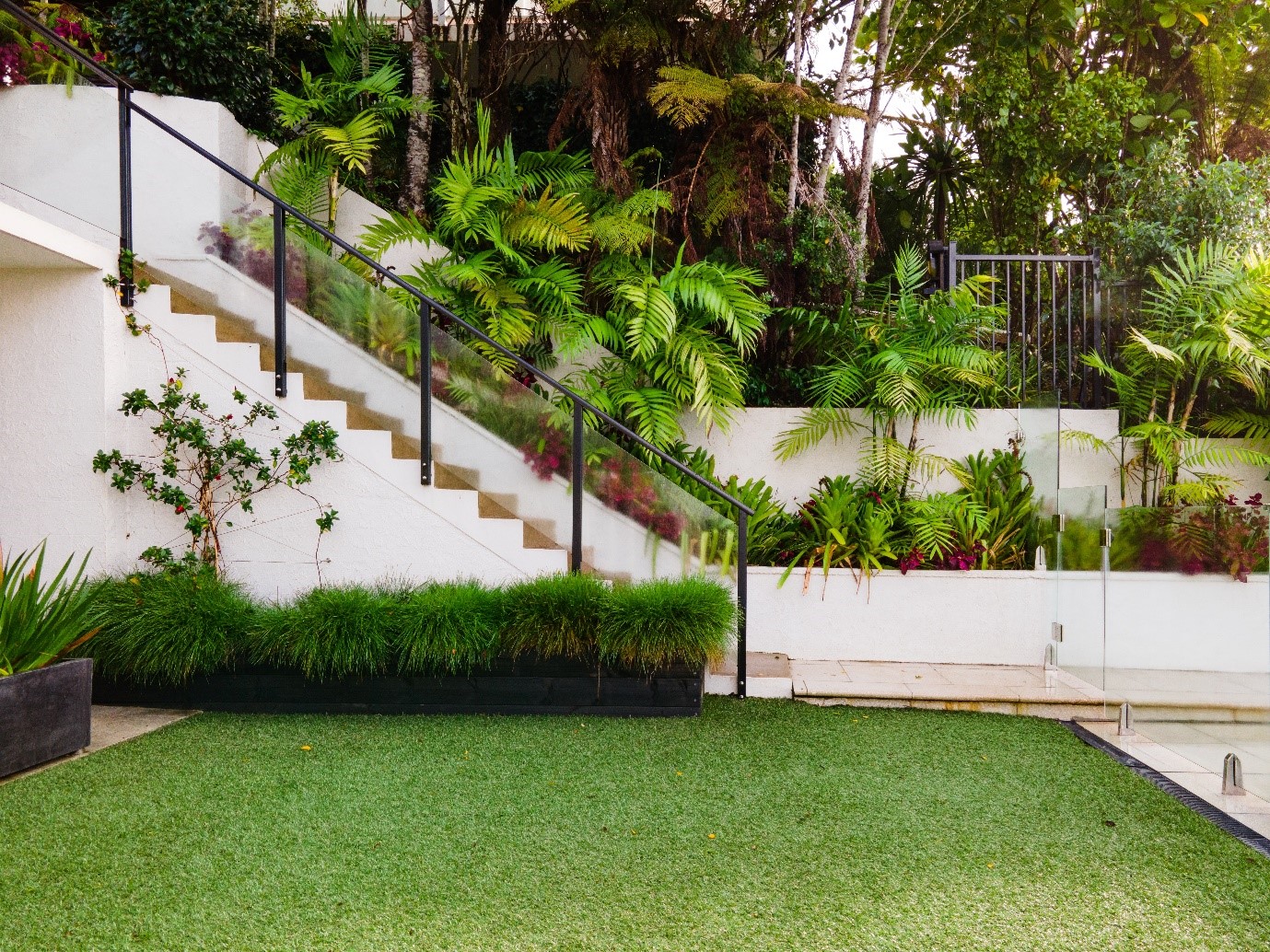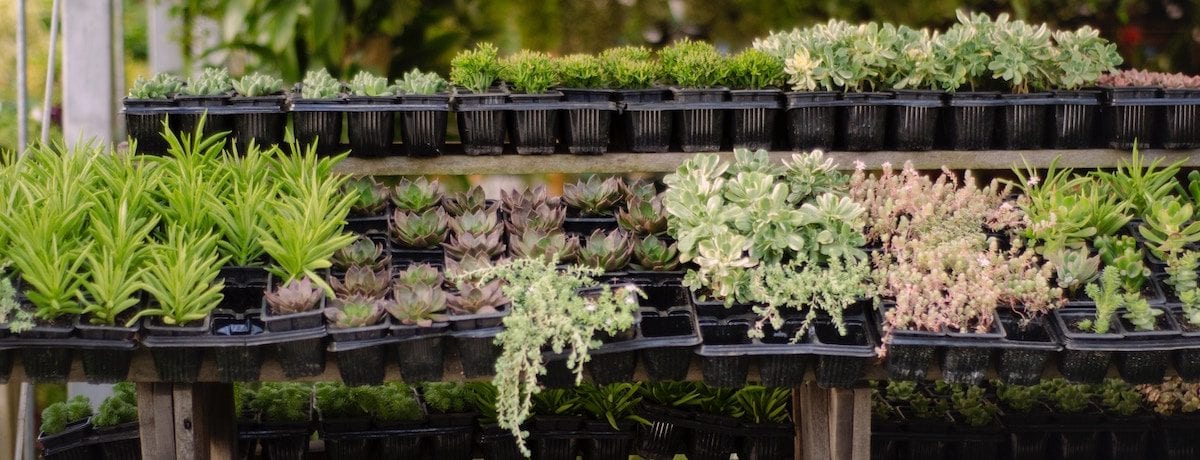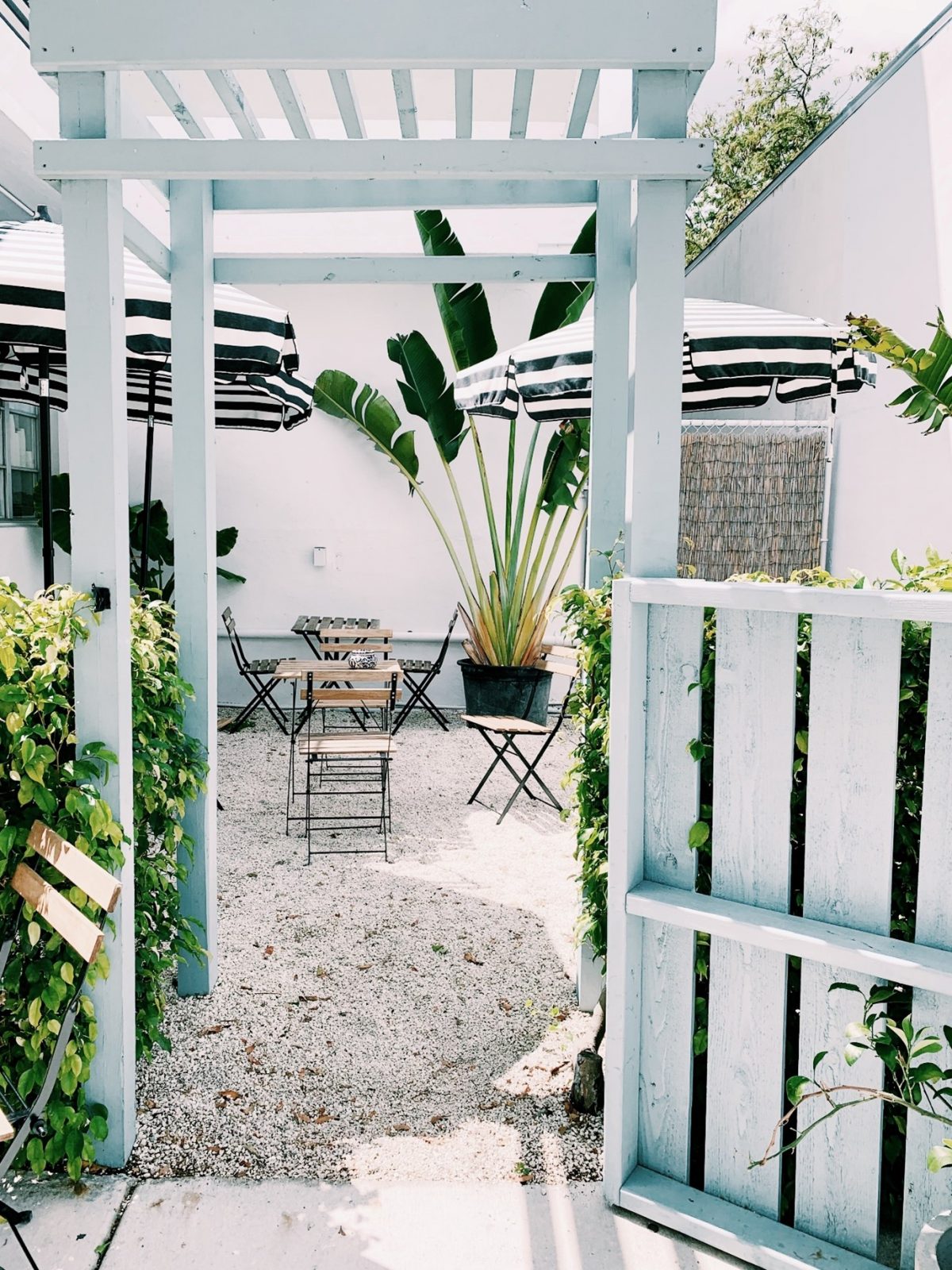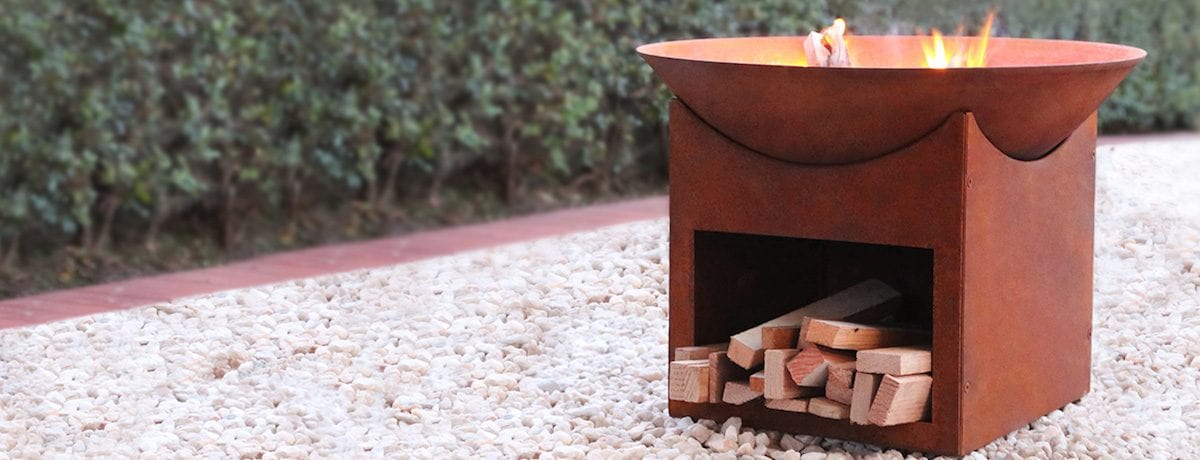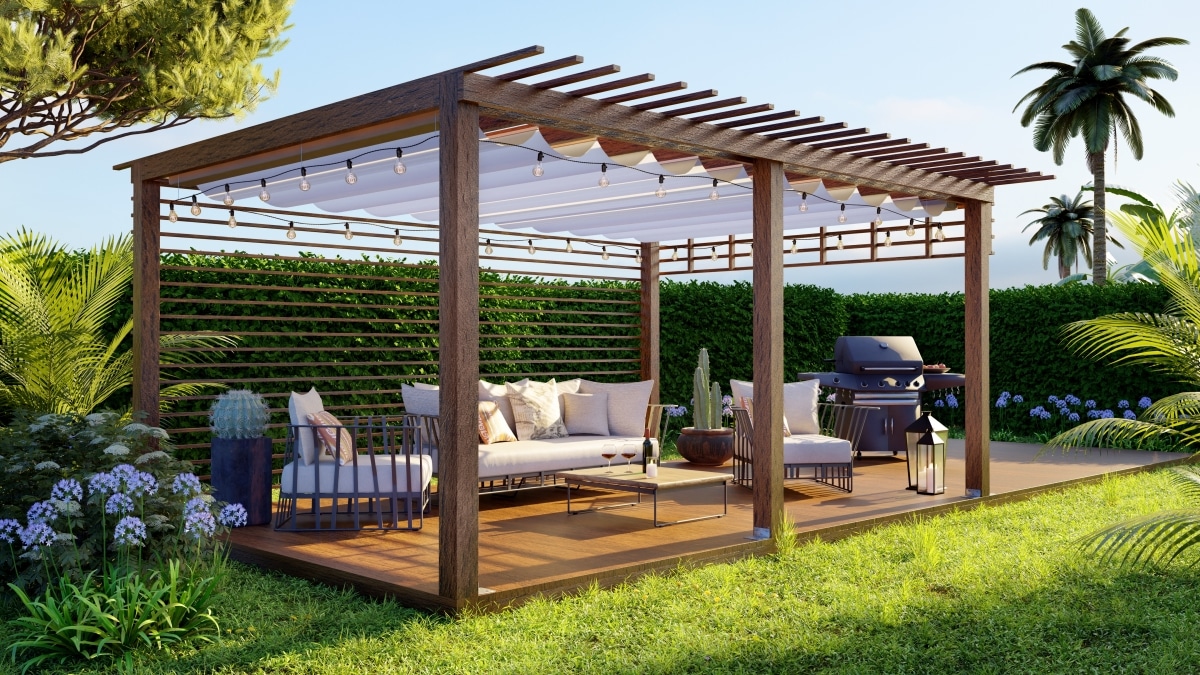Have you got a steep and unleveled garden? Maybe your home is on a plot with an incline? Create a unique outdoor living space by organising and levelling that steep slope into terraces. A terraced garden is simply a series of small gardens on different levels that not only make it look pretty but also help to prevent erosion.
By turning a slope into a terraced garden you basically multiply the available space. It allows you to play with levels in a dynamic and dimensional way. Designing a series of interconnected, multi-level garden beds adds a lot of character to the space. And the result can be a wonderfully dramatic garden with a stage-like, amphitheatre feeling.
This means you can create separate zones with individual purposes, such as decks or patios, bench seating, a firepit area, ponds and pools. So let’s jump in and look at tips for creating a gorgeous multi-level terraced garden full of visual drama.
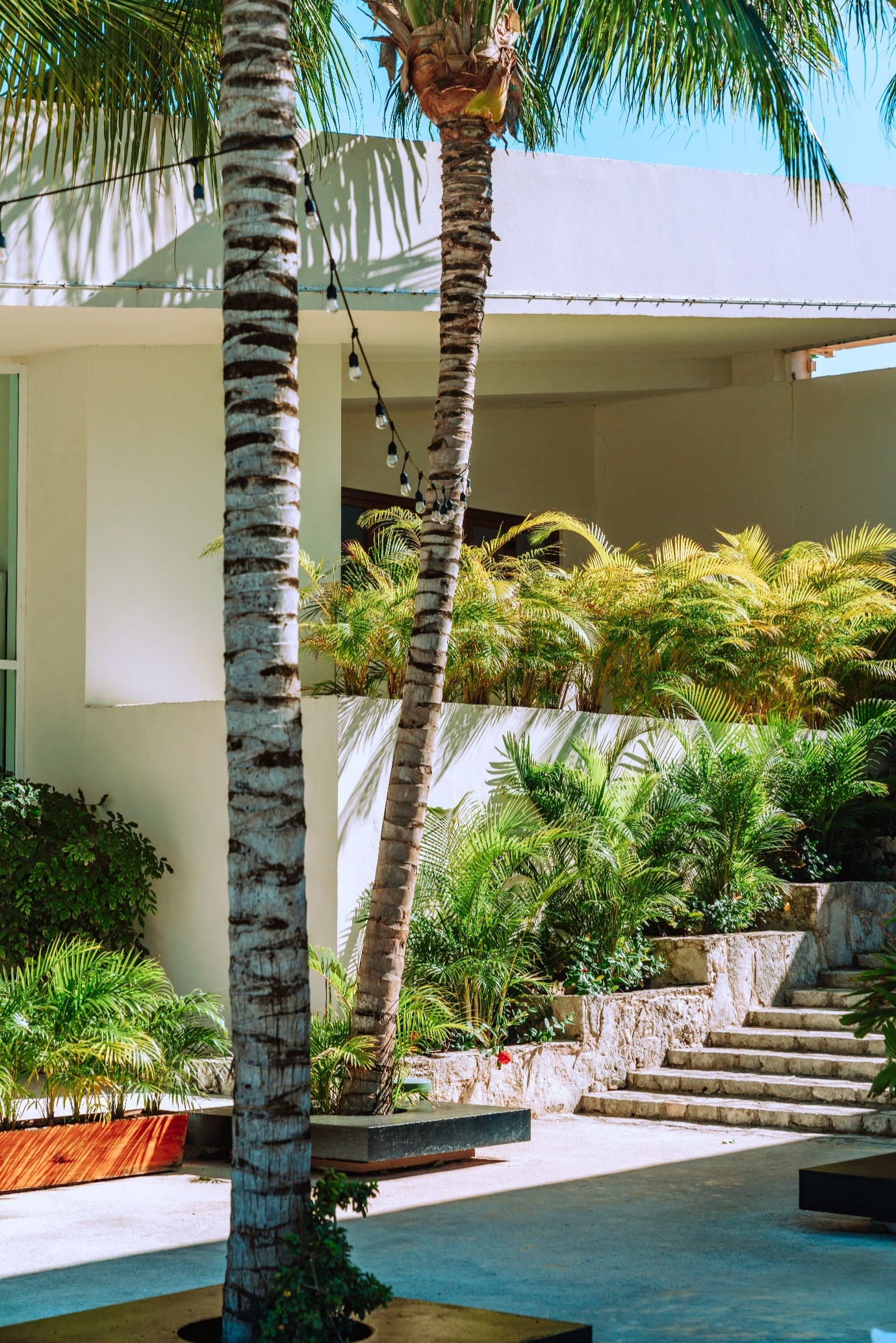
1. Plant for the conditions
So many of our homes are concentrated along Australia’s coastline. It makes sense to fill your terraced garden with plants chosen specifically for their structural strength to withstand the elements. Even if you don’t have a coastal garden, it’s a good idea to plant the levels of your terraced garden with plants that offer good natural structural support. Consider: Westringia, Miscanthus and Lavender.
2. Go for pleasing organic, rounded forms
Adding timber decking to levels of your terraced garden? Stay true to the natural contours of land and space with curved decking. This will keep your terraced garden looking well-defined but still appearing to sit naturally in its context.
3. Maximise the space
Having several levels really maximises the available planting space. Aim for orderly layers of solid plantings in a harmonious colour scheme so that everything looks neat. Have a three-layer terraced garden? Try chalk stick succulents at the top, have a waterfall of Dichondra ‘Silver Falls’ in the middle, and a tall cardboard palm at the base for dimension.
4. Match inside and out
Build your terraced garden retaining walls in the same materials as your home itself keeps the indoors connected to the outdoors.
5. Terrace with grasses
Ornamental grasses look beautiful in a terraced garden as they stir and sway in the breeze, and the more layers, the better. Overlapping terraces full of low-maintenance grasses and shrubs soften up the hard lines of structures. And they provide pleasing hypnotic movement.
6. Play with water
Water features always create visual interest in a garden but they are especially well suited to terraced gardens. Little waterfalls or fountains complement the idea of a slope. Gravity making water trickle downhill just seems natural. You might even want to incorporate your water feature into your irrigation and drainage system.
7. Decide if you need steps
Authentic, formal terraced gardens traditionally include numerous sets of stairs at varying angles. This is intended to allow for journeying through different spaces. Consider your needs: do you wish to wander through your garden or just view it from afar? Do you need access for maintenance? This will help you decide if you need to add steps.
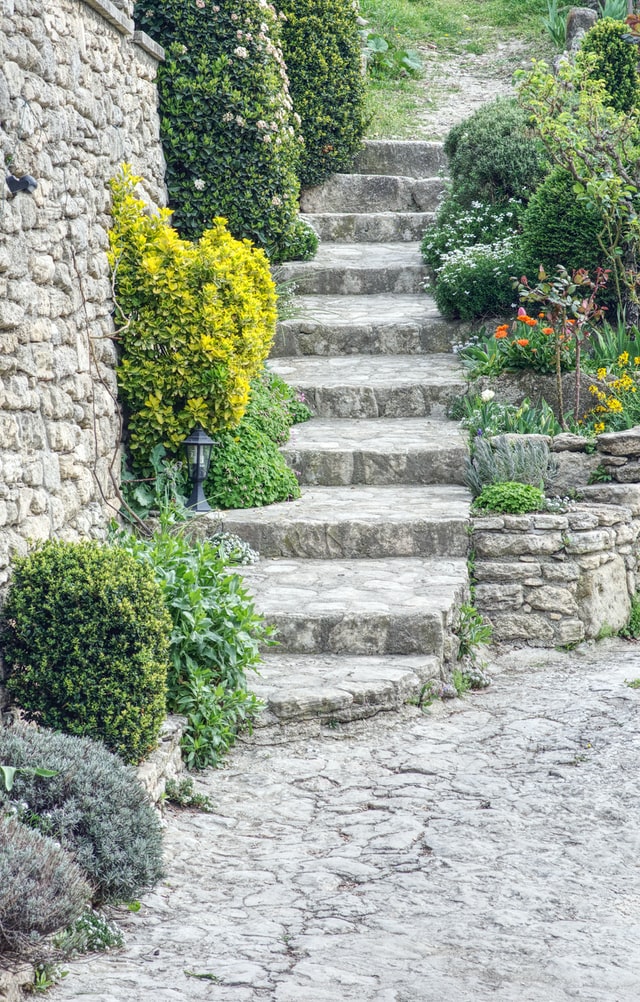
8. Go for parallel lines
If you love a neat, linear look, have parallel tiers. Tiers created by stone retaining walls or rows of trees and hedges in a terraced garden result in a series of horizontal parallel lines. These are very visually pleasing.
9. Have multiple zones
Gardens are not the only option for your terraced space—you can also include little social spaces on different levels. One of the advantages of working with terraces is that you can create all those individual zones that make the space dynamic and functional. For example, you might feature banquette seating along textured stone walls to complete a dining setting. Or, have a spot to warm up outside for cooler nights or winter entertaining. Here are my favourite fire pit ideas that you can use in your garden.
See more outdoor dining ideas with these patio ideas and alfresco ideas.
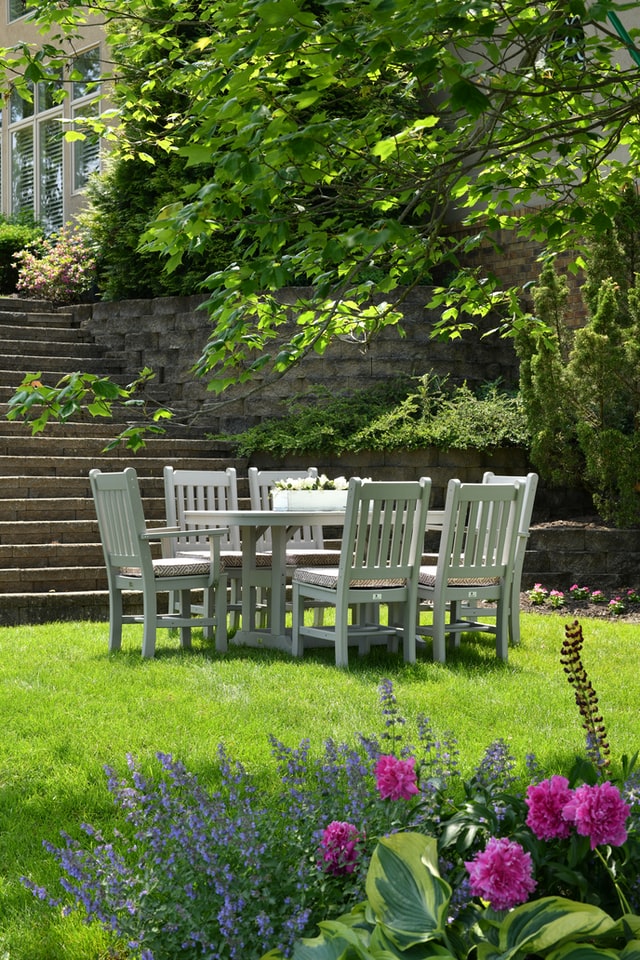
10. Add turning points
Consider adding little steps that change direction as you traverse the levels. It makes for a dynamic and interesting composition in a small terraced garden. Rather than have a steep straight up and down set of steps, ones that make the odd turn are both pleasing to the eye and safer.
11. Light it up
Highlight your gorgeous terraced garden with clever landscape lighting. It might be solar or wall lights, garden lanterns or a string of festoon lights. Either way, adding illumination will give depth to your levels and put the focus on your feature plants.
Lighting such as recessed LED strips can also help make obvious where changes in levels occur, improving the safety of steps. Speak to an expert landscape lighting designer to work out a plan for your garden needs.
12. Have a terraced veggie garden
Classic terraced gardens often take the form of a semi-circular, amphitheatre shape, with terraces on either side of a set of steps. Why not plant up a terraced garden veggie patch with mint, chives, chard and tomatoes? Locate it right outside the back door for easy access for the cook.
Terraced gardens are ideal for growing herbs and veggies as they enable you to section off different kinds of plants very easily. But the beds stay close enough so that you can take advantage of things like gravity irrigation systems or companion planting. If you’ve always wanted an edible garden, a tiered set-up might be just right for you. Check out our tips on how to grow herbs on your balcony.
13. Add planter boxes
Plants in containers or boxes will soften up the hard lines of a structured terraced garden.
If you need some help from an expert in planter boxes, you can always find a local to give you hand.
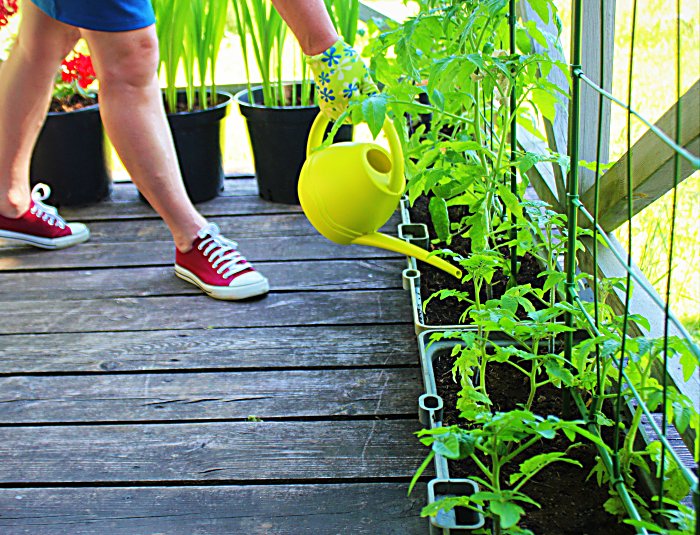
14. Use visual tricks
Not only do the levels of a terraced garden themselves create more space. But you can also take advantage of optical illusions that make the total space appear even larger. Clever landscaping of a terraced garden means it can seem to have a lot more space and depth than it actually has. Dimension can be achieved through a mix of textured plantings and a wandering pathway.
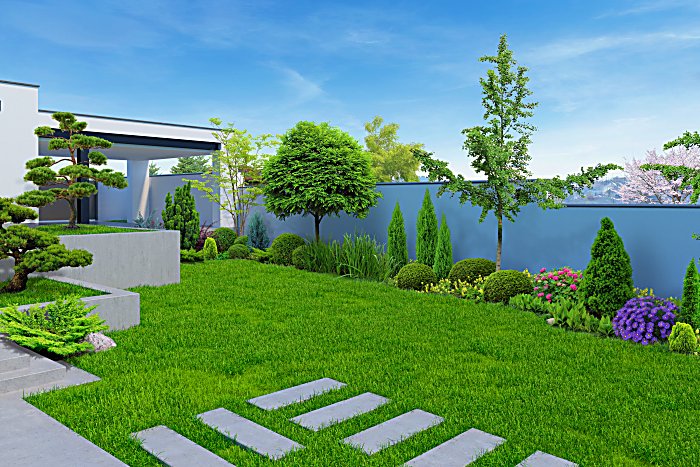
15.Have steps as a design feature
Smaller or less steep terraces have less of a need for retaining walls and structural support. They might be able to get away with just a few steps with gentle, low rises. Extra-wide steps emphasise the horizontal surfaces, contributing to a luxurious sense of spaciousness.
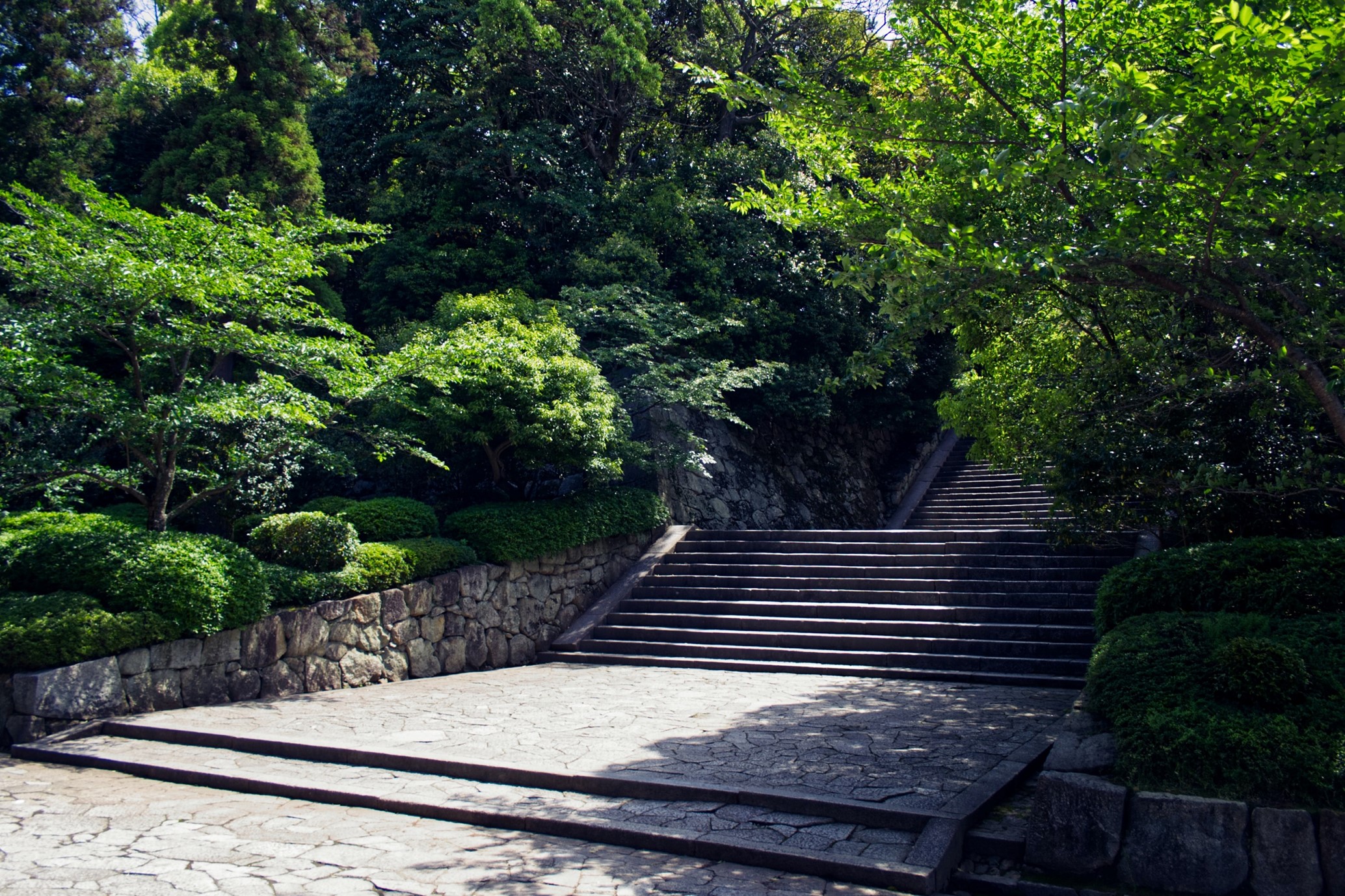
16. Plant low maintenance succulents
Accessibility to all your levels is a factor with terraced garden design. Steps and platforms can help you reach those tricky spots. However, you can make your life even easier by planting up a variety of drought-tolerant succulents and grasses. It’s a great idea as this will reduce your maintenance and therefore access needs. And succulents can look absolutely stunning when arranged in mass plantings and mixed with rocks.
17. Make it classic
Having symmetrical garden beds either side of a set of steps is a classic terraced garden look and provides easy access to all levels of the garden. If you’d like some inspo on other kinds of raised garden beds, see also our article full of amazing raised garden bed ideas.
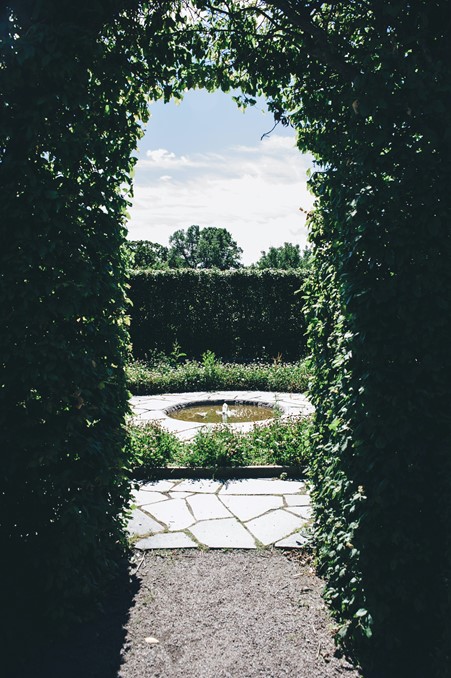
18. Define the steps
It’s a good idea to draw attention to the edges of your steps or pathway for safety purposes. And what better way to do it than to let little flowering groundcovers take hold between them?
19. Consider your watering needs
It may be that some upper levels of your terraced garden are just for aesthetic purposes. In that case, it can sometimes be tricky to reach the highest parts for hand-watering purposes and installing an irrigation system will be the go. Luckily drip irrigation systems can be made easier in terraced gardens thanks to natural gravity.
20. Go for continuity
In planning a terraced garden, think about continuity so that you are keeping a similar visual style both indoors and outdoors. This helps extend the living space out beyond the house itself for a cohesive aesthetic. You can unify the two spaces through colours, materials and even the kind of furniture you add.
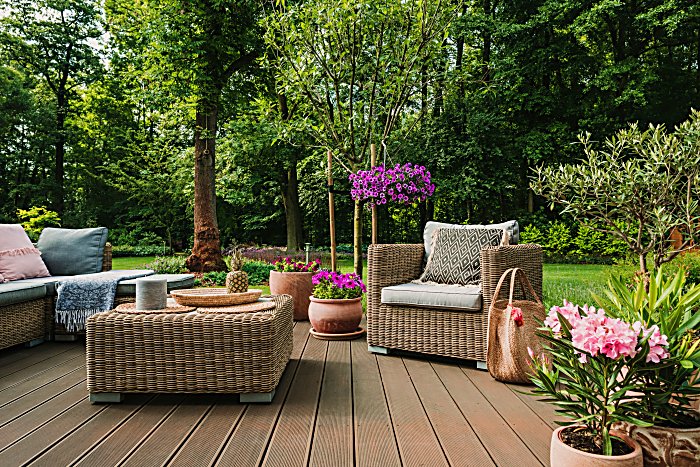
21. Embrace a natural look
You can create terraces with many different kinds of materials, including rocks and boulders. Mini retaining walls made from limestone rocks can be used like dams. They’ll trap rain preventing soil erosion, which is one of the main advantages of terracing.
22. Keep it simple
A simple two-layer retaining wall set up is an easy way to help stop erosion in a sloped front yard. By turning the slope into several gentler steps, the rain gets trapped instead of running off. Choose an attractive textured stone that complements your home exterior. Plant hardy, low maintenance plants that will dominate over weeds so you don’t need to spend as much time out the front weeding. Or, hire someone else to handle your garden maintenance!
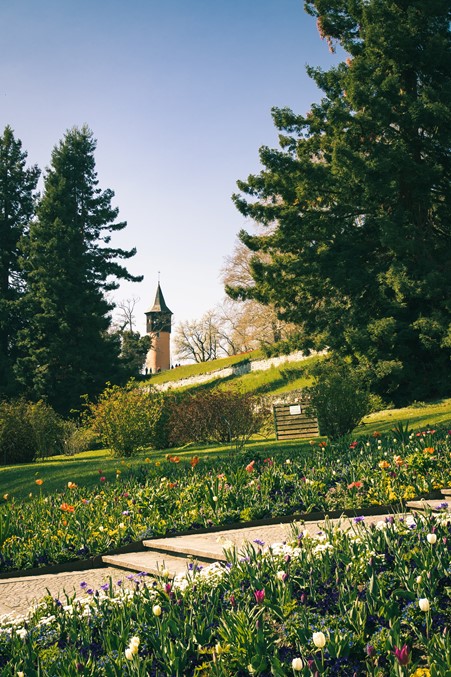
23. Go for structure and order
Terracing helps turn a ramshackle hillside into a sleek contemporary design, with retaining walls providing structure and order. Retaining walls can come in such a wide variety of looks and materials. And your site conditions and needs, as well as personal taste, will guide your choice. Common materials include timber, stone, brick or concrete.
24. Make it functional and aesthetic
Natural stone retaining walls in steeply terraced gardens have the added benefit of acting as a neutral background to feature plants. The contrasting colour really breaks up a planting to highlight focal plants. For example, a limestone retaining wall looks striking paired with a coastal planting. And this will also helps protect a seaside home from powerful winds.
25. Play with colour
You might like to go for a sea of blues and greens with a succulent planting. Or, perhaps a harmonious soft-hued palette of pink and lavender flowers. If you have a particular colour scheme in mind, why not speak with an expert in garden planting who can help you bring your vision to life.
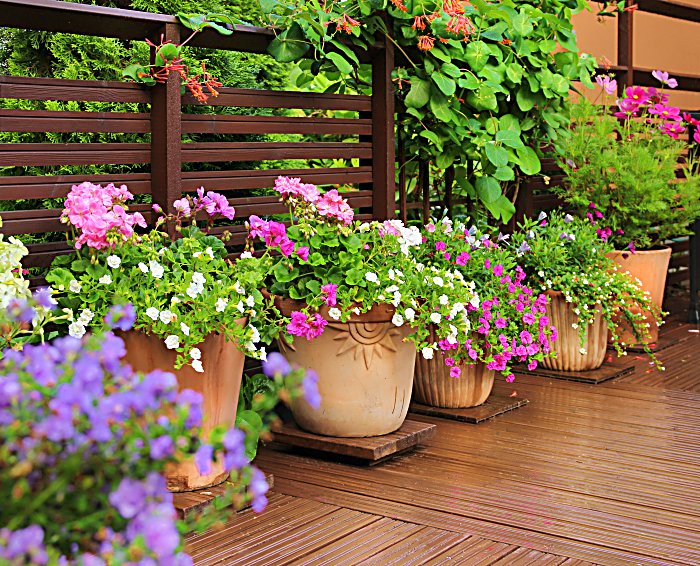
26. Reshape a site
Rather than have retaining walls installed, you can create a gentle gradient by mounding soil to reshape a site’s contours. Adding other elements like chunky granite steps or bluestone stepping stones can also rework an existing site’s form.
27. Terrace around a tree
When planning your terraced garden and assessing existing features, consider whether ripping out mature trees is a good idea. It may have an effect on your site’s integrity by causing ground movement. A garden terraced around a tree can also look very charming.
28. Terrace around a pool
Repetition of materials ensures all the elements and levels of a modern terraced backyard stay tied together. For example, have a pool as part of your terraced garden? Make the decking the same shade of timber as your stairs, timber bench seating or even Adirondack chairs.
For more decking inspo, you might also like to see our article on decking ideas.
29. Mix blooms and boulders
Finally–forget order and neatness, how about a chaotic cascade of colour bursting out around your steps or rocks? It’s a gorgeous and romantic aesthetic.
Challenges and considerations
Of course, there are some constraints when it comes to creating a garden on a slope. You won’t just be able to start slicing into the hillside or removing existing trees and shrubs with abandon. Careful planning is needed to avoid damaging the integrity and stability of the site—who wants mudslides? You’ll need to think about the placement of retaining walls and a planting scheme that’s sympathetic to the hilly location.
Towards the bottom of a slope, you’ll add plants that can tolerate damper soil where the moisture tends to pool after rain. At the top, you’ll plant more dry-tolerant plants. Always look for deep-rooting plants to help with stability. Adding rocks and groundcovers helps anchor soil. And planting trees that create a network of roots helps bind and strengthen the levels. For help with your garden design, you might like to speak to a local expert.
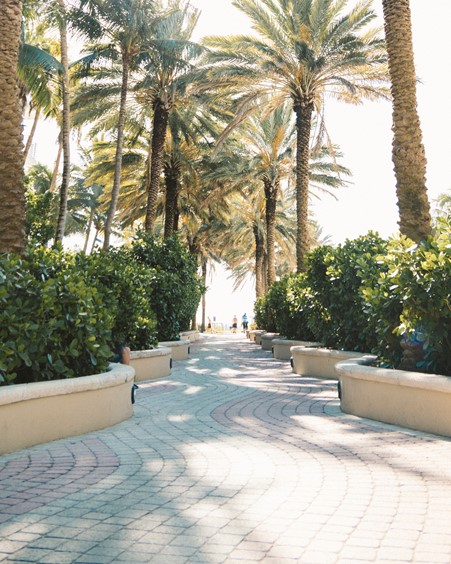
Retaining walls are common for terraced gardens as they turn an incline into smaller increments with less soil pressure. This means less erosion when it rains. A structural engineer is essential to design a retaining wall that has the right stability and strength. If you have a very steep site, it will usually benefit from site grading as well. Drainage is also crucial to get right to avoid damaging retaining walls. You might also wish to include an irrigation system that will help water slowly flow to the lower levels. This will let you avoid a labour-intensive watering regime.
Accessibility is important to address as well. If you plant up a slope you’ll need to be able to access all areas for maintenance or for the enjoyment of social spaces. This may mean adding steps, paths or ramps.
But as you can see from all the wonderful terraced garden ideas above, there are so many ways you could design a gorgeous terraced garden. Do you prefer the symmetry and order of a sequenced arrangement of parallel terraces? Or perhaps you like a more asymmetrical, organic look? Let me know in the comments below!


